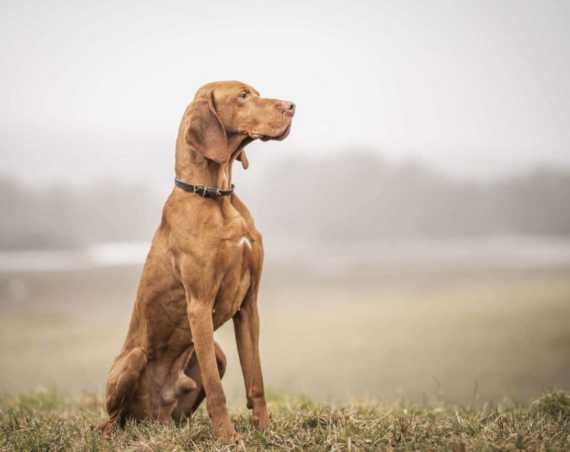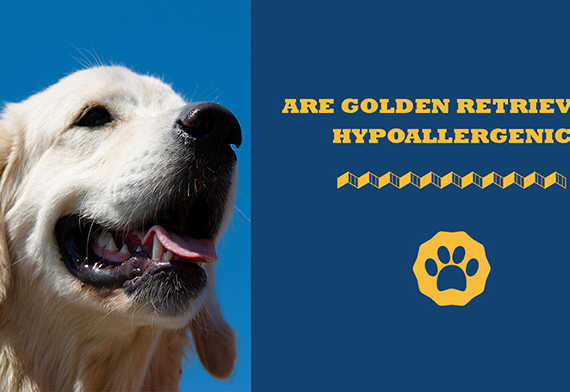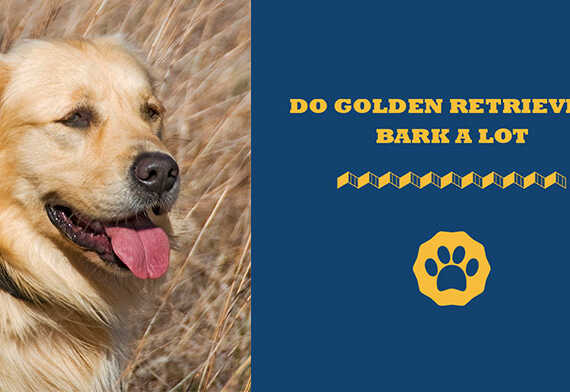Updated: August 9th, 2022
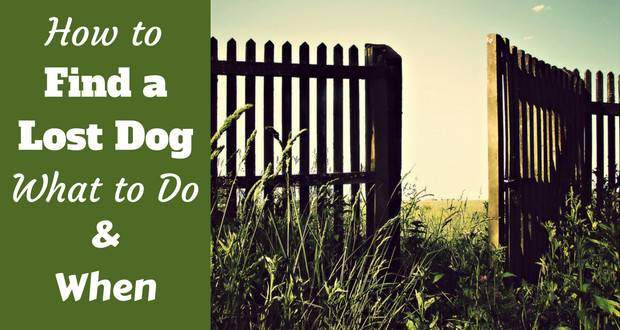
Photo Credit: © Depositphotos.com
You just got home from work and noticed a family member forgot to latch the back door all the way. Sadly, your beloved fur kid had noticed too. You find that your pup has pushed the door open and decided to take an impromptu adventure.
Losing a pet can be a scary experience. However, it is important not to panic as the odds are actually in your favor if you are actively searching. According to a new study from the ASPCA, a full 93% of lost dogs out of 1,015 homes surveyed were returned to their owners.
That’s good news if you’ve just lost your best friend. However, don’t let those numbers lull you into complacency. Knowing what to do in those first few moments is critical.
So read on to be prepared, know how to find a lost dog before the need arises to increase your chances of success.
Table Of Contents
The First Few Minutes
While it may be tempting to run out of the house in a panic with a T-bone steak and a tissue box, you need to stop and consider how to search more logically.
Just like with any missing person, the first few hours are paramount to finding your dog. You don’t want to waste them by looking in the wrong areas.
Is He Actually Lost?
I realize that this may seem silly, but make sure your dog is actually lost. You’d be surprised how many dogs may just be lying under a bush or stuck somewhere.
Monitor the Phones
Did your dog have a collar with your phone number on it? If so, keep the mobile phone with you that corresponds to that number as you search.
If the phone listed is a landline, get someone to go back home to answer the calls.
You never want a Good Samaritan to call your phone and not have someone ready to answer it. Time is of the essence in these situations.
In addition to having someone on the phones, if you have other friends you can lean on that know your dog, call them to come help you search the neighborhood. More boots on the ground gives you better odds.
Try to Determine Why They Ran
Next, think about your dog’s temperament and why they ran away.
Are They Afraid?
If they are running due to fear, realize they will probably try to hide. Look for them in areas without a lot of activity where they can conceal themselves. Search under cars and behind bushes.
Also, fearful dogs will often avoid people and run farther than dogs just wanting to explore. They will need a wider search area.
Are They Looking For Love?
If they are running away because they are not altered, understand they may be trying to find a mate. Think about any other people in the area with dogs left outside that may attract them.
Are They Looking For a Friend?
If they are running away because they are social and want an adventure, check out area parks where there is a lot of activity with other dogs and kids to attract them.
Also, if your dog is friendly, it’s a pretty good bet they have already run up to the first kind person and been rescued. Your search radius may need to be smaller with more door knocking.
Are They Looking For a Location?
If you recently moved, realize that your dog may be trying to find a way back to your previous home.
Outside Factors That Impact Search Radius
Now that you have a good idea of what motivated your dog to run, you need to think about outside influences that could affect how you conduct your search.
How Long Have They Been Running?
If at all possible, try to figure out how long your dog has been loose so you can structure your search area accordingly.
Have they had all night to roam? Then you probably need to widen your search radius. Have they just been gone for five minutes? If so, you can probably focus on a smaller area.
Are They Fit or Lazy?
You should also consider your dog’s physical condition. Are they a couch potato? Then odds are they haven’t gone too far before finding a place to relax.
Do you take them running on your 5-mile training route every morning? Then you will probably need to widen your search.
However, realize that in most cases, dogs are found within a few miles of their home.
Is It Traveling Weather?
Is it is a sunny, mild day? Then your dog will probably run farther than if it is snowing outside or in the middle of a thunderstorm. If the weather is poor, they will search for shelter.
Also, if the temperature is very hot, your dog will likely tire faster and seek out shade and water.
All of these factors should help you predict where you should start your search.
Where Does the Terrain Lead?
Dogs will often move along the path of least resistance. If you live on a hill, it is more likely that your dog would have run down it than up.
If you live in the woods, your pup has probably chosen a well-worn path or road instead of pushing through the thick brush.
How Many People Are Around?
If you lose your dog in the middle of New York, the odds of someone picking them up in a shorter time period are much higher than losing them in the rural Rockies.
A dog lost in more rural areas will travel farther before encountering humans.
How Do People React to Your Dog?
Sadly, not all loose dogs are treated equally when found. Smaller dogs have a better chance of finding help simply because they are less imposing, look more vulnerable and are easier to transport than larger dogs.
The breed can also impact if they will receive help or not. Sadly, people have been conditioned to wrongfully fear certain breeds.
If good people pick up your dog, they have a high likelihood of being behind a closed door at someone’s house or dropped off at a rescue. If people react to your dog in fear, they are more likely to wander farther before they receive help.
Determine Your Search Radius
From this information, look on a map and plan where you will search. If you can call friends or family that the dog is familiar with to help you, you can cover ground faster.
Begin with local walking routes that are familiar to your pup and use your knowledge of terrain, weather, your dog’s fitness and personality to determine the most likely places they would visit first.
What to Take When Searching for a Lost Dog
As soon as you know your dog is missing and you have the phones covered, it’s time to start your search from the area where they were last seen.
Favorite Toy or Treat
As you walk the area, have your dog’s favorite thing with you. If your dog loves the sound of the treat bag opening, have the highest-value – and preferably smelliest – treat in hand.
Your Dog’s Picture
Also, have a current picture of you dog with you along with either business cards or a pad of paper to write down your phone number and give out to people.
While those first few minutes are critical for you to be out searching, having a friend meet you with printed fliers can greatly help. It’s much better to hand out more organized information in flier form to people.
During your search, show everyone the picture of your dog and leave your contact information with them so they can call you with sightings.
Flashlight and Phone
Carry a bright flashlight so you can shine it under cars or darker areas to see if you get any eye reflections coming back your way. Also, if you start to lose daylight, you don’t want to have to go back and get a flashlight.
Keep your phone with you so you can communicate with your home base and also other people who are searching at other locations. If someone else spots your dog, you will need to get there quickly before they run.
Your Voice
Don’t forget to call out your dog’s name often. Also, if they know the word for a treat, use this to help appeal to their appetite.
You want to keep your voice and demeanor upbeat so the dog wants to come to you. If you sound angry or anxious, they may hide instead of revealing themselves.
Your Dog’s Buddy
If you own another dog and you are walking on foot, take your furry family with you on a leash to see if their presence may attract your lost pup back to you.
Leash
If the leash negatively triggers your dog, make sure to hide it so they don’t run from you. However, you will need something to control your wayward pup and bring them home.
The First Hour

Photo Credit: © Depositphotos.com / cteconsulting
Many times, dogs come home after their neighborhood stroll. You want to make sure someone is there to catch your explorer should they come back to water their favorite bush or show up around dinner ready for their meal.
Create a Flier
When you describe your pet on the flier, you should leave out one identifying characteristic.
When people call to say that they have your dog, ask for this one characteristic to vet their honesty. You should know if they are being truthful and not luring you to their homes for other reasons.
Sadly, some people play on the dog owner’s emotions and claim to have the dog when they actually don’t. They want you to wire them money before giving you the information. Don’t fall for this scam.
Always ask for the identifying characteristic. If they don’t know it, they probably don’t have your dog. However, make sure your flier does include clear information with your dog’s photo, breed, color and phone number.
Post to Internet Sites
Once you have your flier put together, print out copies and keep them with you on your neighborhood search while another person stays home to post the document to online sites.
- Post the flier to social media sites and ask friends to share it.
- List to online yard sale and trading sites for your local area.
- Publish the flier on your local Craigslist Lost and Found page.
- See if your neighborhood has Nextdoor or another neighborhood-specific networking site. It’s a quick way to get all your neighbors looking and spread the word about your missing pup.
- Post to the following resource pages (depending on your country):
Call Drop-Off Locations
You should also have someone on the phones calling areas where people may drop off your dog.
Be ready to send over the flier with all the information if they are willing to take it and put it up.
Veterinarians
People often take dogs to local veterinarians. They will certainly do this if the dog appears to be injured, but they also take them there to scan them for a microchip.
Call your area vet offices first to let them know your dog is missing and give them a description and flier.
Animal Shelters and Rescues
Many people drop dogs off at animal shelters if they are unable to house them. However, understand that others may be reluctant to bring your dog there due to the fear of euthanasia.
Since dogs dropped off at shelters are often only held for a few days in the busier locations, it’s always good to make sure you keep checking them in person.
Animal control also responds to calls of loose dog sighting, and may drop them off at a shelter after they retrieved them.
Remember that even if your pet has information on their collar, they may have lost it or had it removed by the time they are found.
Make sure to reach out to all area shelters and rescue organizations within at least a sixty-mile radius. Give them a description of your dog, let them know you will be bringing a flier, and ask to look in their dog pens to check for your pet.
File a lost pet report with shelters so they have all of your information and a description of your dog. Check to see if they keep a “Lost Pets” section online.
If your area doesn’t have a local shelter, contact your police department on their non-emergency line so they can be on the lookout for your pet.
Pet Stores / Groomers
The most likely person to help your pup is another dog lover. In most cases, these people already have dogs. It makes sense to post fliers to areas where they go to take care of their own pets.
The First 24 Hours
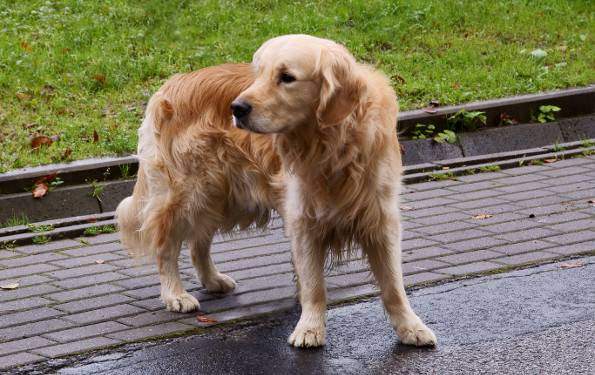
Photo Credit: © Depositphotos.com / Manka
If you haven’t found your dog in the first few hours, don’t panic. It’s very possible someone has taken them in and is trying to figure out how to contact you.
Start a Neighborhood Flier Campaign
Once you have contacted the appropriate places where someone would bring your pet and posted your search on the Internet, it’s time to start the flier campaign.
Print off a flier on brightly-colored paper with your pet’s close-up, in-color photo clearly visible.
Don’t fill the flier with a lot of verbiage. Keep things easy to read for someone in a car. You can post that your dog is missing, the breed, color and your contact information. Offer a reward for their safe return.
Have tear off sheets with your phone number so people don’t remove the flier if they want to take your phone number down.
Post your flier in prominent places around your neighborhood. Focus on locations where people may be stopped in their cars, such as traffic crossings.
You can also create door hangers with the same information as the flier and hang them on the doors around the neighborhood where your dog was last seen.
If you can be safe about it, you can also knock on doors and let people know you are searching and leave a flier behind so they can easily identify your dog and contact you.
Drop Off Fliers at Key Locations
Also, post the fliers at local businesses, veterinary offices, animal shelters, dog grooming locations, pet stores, grocery stores and anywhere else you can think of where there is a public information board.
Dog parks are another great place to post fliers. Not only will you get a large audience of dog lovers, but it’s also possible that the need for canine companionship will draw your wandering canine into the park where they will be recognized by the regular visitors.
Perform Kennel Checks In Person
When checking animal shelters, walk through their kennels to make sure your dog isn’t there.
Shelters may misidentify your dog’s breed, so you need to perform physical checks of the cages. Don’t just take someone’s word over the phone that they aren’t there.
Utilize Newspaper Ads and Radio Stations
Remember that not everyone is Internet savvy. You should also reach out to local newspapers and see if they will let you post an ad for your lost dog for free, or at least for a discounted rate.
Call your local radio stations and see if there is a way to advertise your lost dog to their listeners.
See if you can have these ads running for at least two weeks to make sure everyone gets the chance to be notified.
Leave Something Out That Your Dog Loves
Dogs respond to a scent. If you know where your dog was last seen, especially if you lost them in a location unfamiliar to them, leave something that smells like you at the last place they were spotted.
This item can be an old shirt, a blanket, their bed, or anything that brings them comfort and reminds them of home.
Leave some food and water and a note next to the item telling people not to disturb the area as you are trying to find your missing dog. Visit the spot often to see if your pet comes back to the item.
Enlist Help From the Pros
There are companies that specialize in finding lost pets. If any of these businesses operate in your area, they are often worth the expense to have their experience working for you. These pros may even use other dogs, such a bloodhounds, to track your lost pet.
The Second Day
Don’t give up on your neighborhood search. Now that you have fliers printed, take them with you and continue to walk or drive the area your pup was last seen.
Hang and pass out more fliers to everyone you meet. Check that your previously hung fliers are still up. Continue to visit new homes with more door hangers and door-knocking campaigns, and be sure to follow up on all tips and sightings.
Check online posts and repost if they have gotten buried under other updates so that they remain at the top of the site.
The Ongoing Weekly Search
While it may be tempting to run yourself ragged because you are worried about your dog, remember you need to get rest too. Take some time to regroup and think about possible places you haven’t yet searched.
Don’t Give Up
Organize some friends to help you scour the neighborhood and talk to locals. Ask them if you’ve noticed anyone walking a new dog around the block.
You can also ask your neighbors to review their security cameras to see if any of the cameras caught the dog walking in a certain direction or show someone walking with your dog.
Keep talking to people, leaving information and telling them about the reward to safely bring your pet home. Check lost and found sites online and in the newspaper.
Alert Pet Services and Professionals
You can also reach out to local trainers, dog walkers and pet sitters in the area that you still haven’t found your dog and leave the fliers with them.
Keep checking in with vets and groomers and ask them to be on the lookout for a new customer. While it is very dishonest, people sometimes keep dogs they find without attempting to find the owner.
How to Catch Your Loose Dog
Remember, not all dogs will come to you even if you do find them. If you are close to your house, instead of running after them, make them chase you. If your gate is open, make it a game and have them chase you back into your yard.
Another trick is to cry out and drop to the ground. Many dogs will come to check on their owners to make sure they are o.k. This is a great time to introduce a yummy treat so they come close enough to leash them.
Remember, to some dogs, the great outdoors is one big Doggie Disneyland. They may not be ready for the fun to end, so you have to outsmart them.
Before They Go Missing
If you’re reading this and you haven’t lost your pet, there are two very important things you can do to exponentially increase the chance of finding your pet if they ever lost.
Microchip / GPS Your Pup
Microchips are available at your veterinary office. They are small devices implanted just under the skin that all veterinary offices will scan if someone brings in a lost dog. The data on the chip will link them back to you.
Make sure to register your information with the microchip company so your pup can be easily traced to you with all relevant contact information.
Some owners also put GPS devices on their dog’s collar or on a chip implant. Make sure you know the range that your device covers and utilize it if they ever go missing.
Contact Information On Your Pet’s Collar
The first thing someone will do if they find a loose dog is to look for a collar and see if they can find the owner’s information.
Keep your phone number and address up to date and on the collar of your pet at all times .
Conclusion
Losing a dog can be a very traumatic experience for both dog and owner.
However, if you take action, follow a logical plan, and try to get inside your dog’s mind, you have a much greater chance of finding your best friend no worse for the wanderlust wear.

